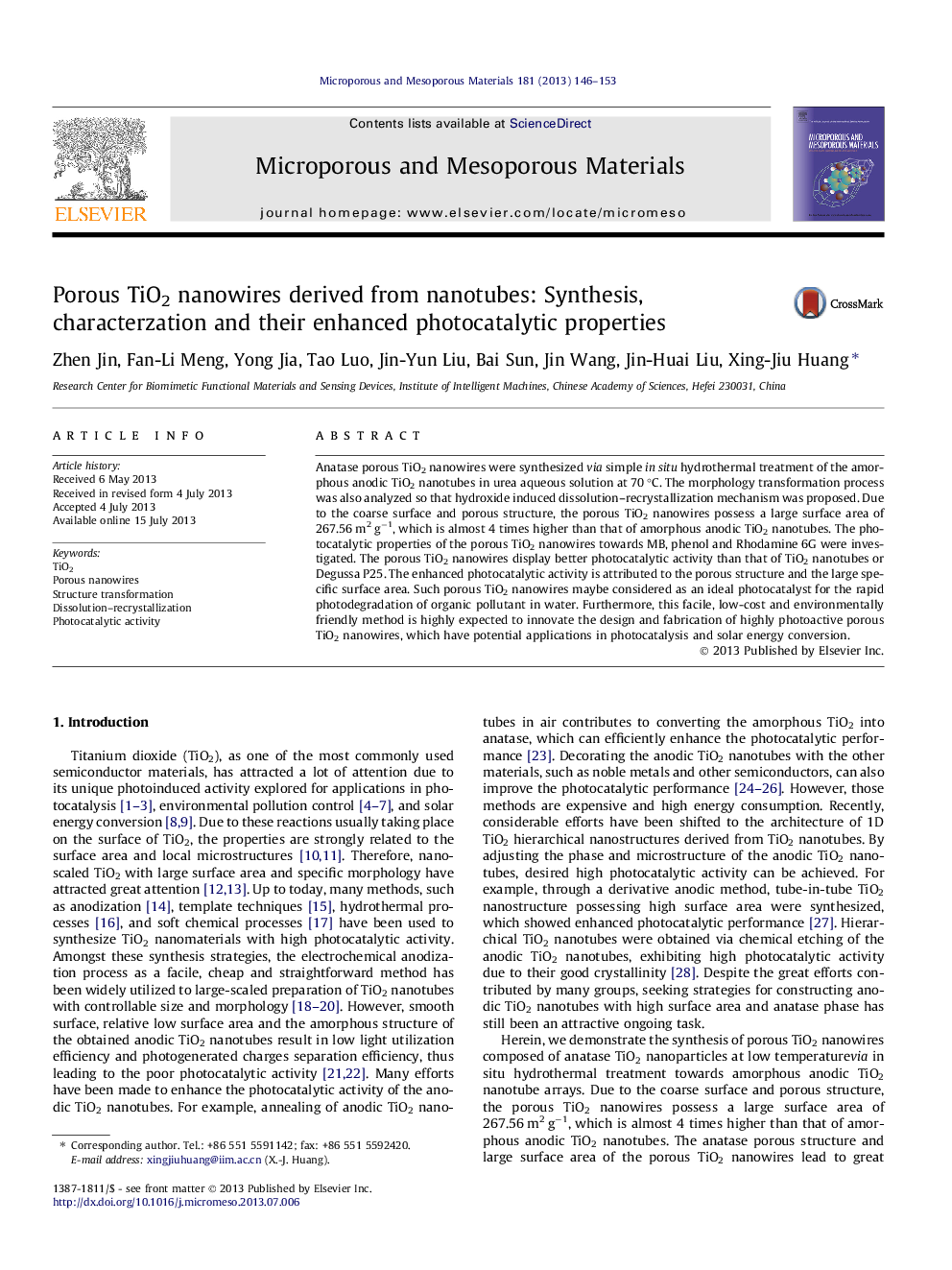| Article ID | Journal | Published Year | Pages | File Type |
|---|---|---|---|---|
| 73345 | Microporous and Mesoporous Materials | 2013 | 8 Pages |
•Anatase porous TiO2 nanowires were synthesized via simple in situ hydrothermal treatment.•Hydroxide induced dissolution–recrystallization mechanism was proposed.•The BET surface area of the product reaches 267.56 m2 g−1.•The porous TiO2 nanowires exhibit superior photocatalytic activity even than P25.
Anatase porous TiO2 nanowires were synthesized via simple in situ hydrothermal treatment of the amorphous anodic TiO2 nanotubes in urea aqueous solution at 70 °C. The morphology transformation process was also analyzed so that hydroxide induced dissolution–recrystallization mechanism was proposed. Due to the coarse surface and porous structure, the porous TiO2 nanowires possess a large surface area of 267.56 m2 g−1, which is almost 4 times higher than that of amorphous anodic TiO2 nanotubes. The photocatalytic properties of the porous TiO2 nanowires towards MB, phenol and Rhodamine 6G were investigated. The porous TiO2 nanowires display better photocatalytic activity than that of TiO2 nanotubes or Degussa P25. The enhanced photocatalytic activity is attributed to the porous structure and the large specific surface area. Such porous TiO2 nanowires maybe considered as an ideal photocatalyst for the rapid photodegradation of organic pollutant in water. Furthermore, this facile, low-cost and environmentally friendly method is highly expected to innovate the design and fabrication of highly photoactive porous TiO2 nanowires, which have potential applications in photocatalysis and solar energy conversion.
Graphical abstractFigure optionsDownload full-size imageDownload as PowerPoint slide
